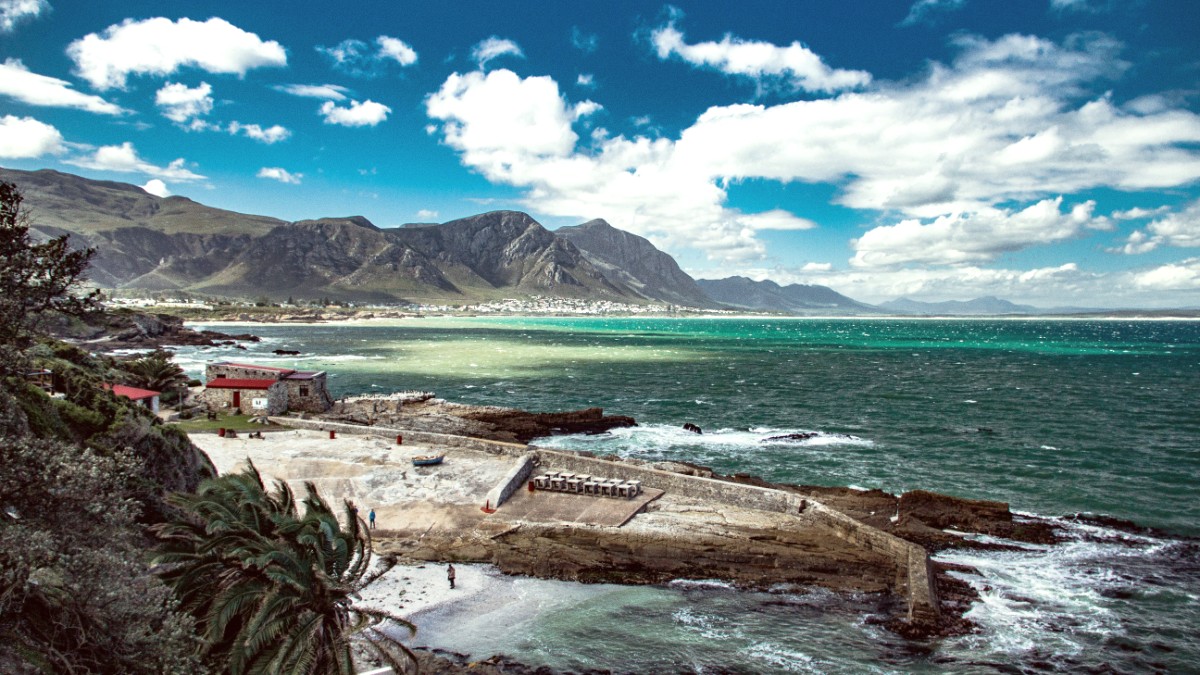
South Africa
Summer (December - February): This period brings warmth and dryness. Daytime temperatures typically go from 15°C (59°F) in the mornings to 27°C (81°F) in the afternoons. Humidity levels are low, and rainfall is minimal. Days are long and sunny, ideal for beach activities and water sports.
Autumn (March - May): Autumn introduces milder conditions after the summer warmth. Temperatures range from 12°C (54°F) to 24°C (75°F). Rainfall increases towards May, but many days remain sunny. This shoulder season offers comfortable exploration with fewer crowds.
Winter (June - August): Winter in Hermanus is mild and wet. Average temperatures range from 7°C (45°F) to 19°C (66°F). This is the wettest time, with occasional cold fronts. Despite rain, many days still offer clear conditions. The fynbos appears lush, and the atmosphere feels quieter.
Spring (September - November): Spring marks the transition to warmer, drier weather. Temperatures typically range from 10°C (50°F) to 22°C (72°F). Rainfall decreases significantly, and sunny days become more frequent. This coincides with the peak of the whale watching season.
December - February & July - November (Whale Peak)
Warm weather, long sunny days, lively atmosphere. All attractions and services operate at full capacity. Peak opportunities for Southern Right Whales.
Accommodation prices reach their highest. Larger crowds, requiring advance booking. Parking presents challenges.
March - May & September - November
Pleasant weather for exploration. Fewer crowds, leading to better value for accommodation and tours. Good whale watching in early spring.
Some attractions or tour frequencies might operate on slightly reduced schedules. Certain seasonal events may not be active.
June - August
Accommodation prices are at their lowest. Tourist numbers are significantly reduced, offering a tranquil experience. Start of whale watching season.
Cooler temperatures and a higher chance of rain. Daylight hours are shorter. Some smaller businesses might close.
While generally mild, summer heatwaves occasionally push temperatures above 30°C (86°F), making afternoons quite warm. Winter lows can approach freezing at night, specifically inland. Snowfall in Hermanus is extremely rare, seen only on mountain peaks in the distance. The "Cape Doctor" is a strong south-easterly wind prevalent during summer afternoons. It brings clear skies but also choppier ocean conditions.
During the dry summer months, specifically from November to March, a heightened risk of veld fires exists. These fires occur in natural areas like Fernkloof Nature Reserve. Stay informed about local fire warnings, avoid open flames in natural areas, and follow any instructions from authorities regarding fire safety.
Coastal weather changes quickly. Pack layers for adaptability.
A light Windbreaker is useful even in summer.
A waterproof outer layer is a must for winter visits.
Strong sun exposure is common; use Sunscreen and a Wide-brimmed hat.
The dry climate can promote dehydration; drink plenty of water.
South Africa has specific visa requirements. Citizens of certain countries are free from obtaining a visa for tourism for stays typically up to 90 days. For other nationalities, a Visitor's Visa is a condition.
Many countries' citizens do not need a tourist visa for stays up to 90 days. This includes, but is not limited to, nationals from the United States, United Kingdom, most European Union countries, Australia, New Zealand, and Canada.
If you are a national of a country that asks for a visa for South Africa, you must obtain one before your trip. The most common type for tourists is a Visitor's Visa.
There are no general entry fees for tourists to South Africa upon arrival. The immigration process upon landing at an international airport, like Cape Town International Airport (CPT), typically follows a standard sequence.